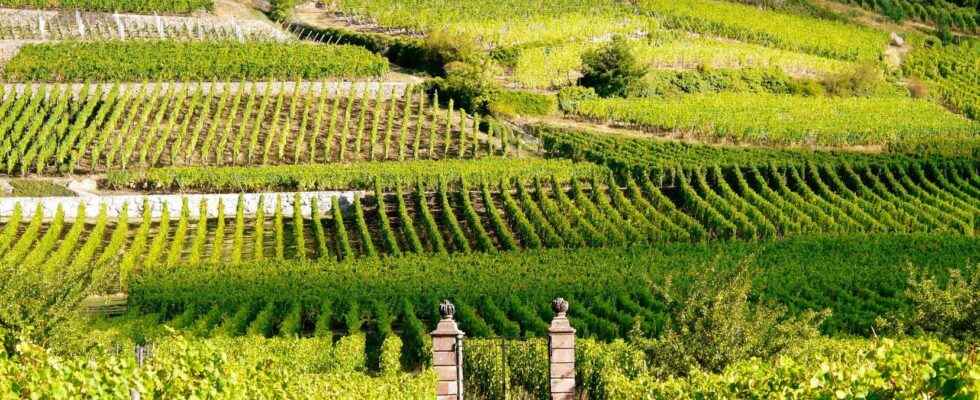“Climate change is already having a clear impact on the ground, and that is why we at Domaine Albert Mann are considering top-grafting Syrah plants on a few experimental plots”, explained the Alsatian Marie-Thérèse Barthelmé during her visit Quebec this week while sipping a flute of Pierre Gerbais’ excellent Grains de Celles ($52 – 13647014 – (5) ★★★ 1/2). A champagne whose tone and convincing naturalness invited the talkative winegrower to redouble her passion for her beautiful corner of the country.
Syrah in Alsace? The idea may not be so silly. “It will not be easy for anyone, she continues, because we will have to review our cultivation methods, especially for vineyards like Burgundy, renowned for its fine Pinot Noir. Will Nebbiolo and Grenache Noir one day replace the illustrious Noirien? It will be necessary to adapt to a new reality, in all respects inevitable, because, here as elsewhere, the quarter century to come promises a revolution, even an unprecedented challenge, in terms of world viticulture.
Alsace and Burgundy. These two prestigious French appellations, renowned for the great finesse of their wines, offer some similarities that deserve to be highlighted. By trying to circumscribe them, however, we realize that there is a major advantage in one of them. What benefit is it and what is the name that claims the merit? Let’s dissect here to drink clearly by weighing everything on both sides.
Burgundy. Geographically, the wine country of Philippe le Hardi stretches over a thin strip 150 kilometers long between Chablis and Mâcon totaling a planted area of some 30,052 hectares. On the ampelographic level, it displays six grape varieties for juices delivered up to 60% in white. Burgundy production covers 47% in village and premier cru appellations, 52% in regional appellations for only 1% in grand crus. At last count, 17% of the planted areas here were organically farmed.
Common points with its Alsatian neighbor located in the northeast? A south-south-east orientation of the similar plots, but above all essential for optimal ripening of the berries, as well as an average altitude of 250 meters at the mid-slope, where the best wines are concentrated. Both share a continental climate alternating cool winters and hot summers, although Alsace is renowned for its ideal sunshine as well as for its lowest rainfall in France. Soils and subsoils are, in both cases, very complex in terms of their overall mosaic, with up to 13 different geological families as far as Alsace is concerned. A better pedology for all that? Let’s say different. Stylistically, these two appellations offer fine, digestible, elegant, racy wines which, in the best of cases, will keep for a long time.
Alsace, for its part, spreads over 120 kilometers with its 15,623 hectares, of which the ten authorized grape varieties provide 70% of the production in communal appellations and in Alsace “lieux-dits”, against 26% for crémants and 4% in large raw. The whites dominate here up to 90% of the total production. On the rise, the organic (and biodynamic) sector accounts for around 15% of the offer offered.
Where the shoe pinches, and as the winegrower from Wettolsheim so rightly pointed out, “it is the prices which, in Burgundy, make it possible less and less to retain the consumer, who turns to other regions…” The prices, here we are ! Verification made, Alsace takes the piece here and wins hands down. Let’s compare the extremes. For example, at the bottom of the hierarchy, this 2019 organic Pinot blanc auxerrois from Domaine Albert Mann, soon to be available at the SAQ ($25.35 – 14955625 – (5) ★★★), and its equivalent Aligoté from Burgundy: match no side quality / price / authenticity.
Everything is reversed this time with regard to the top of the pyramid of grands crus. On the SAQ website, the cheapest of the 51 Alsatian grands crus started, at the time these lines were written, at $25.75 to peak at $162.50 for a selection of noble grains. Average price according to the SAQ offer for Alsace grand cru: $68. The monopoly site displayed a completely different reality for Burgundy. The floor price of one or other of the 33 grands crus on offer? $68. The highest ? $4370. Calculate the average. There are numbers that make you dizzy!
